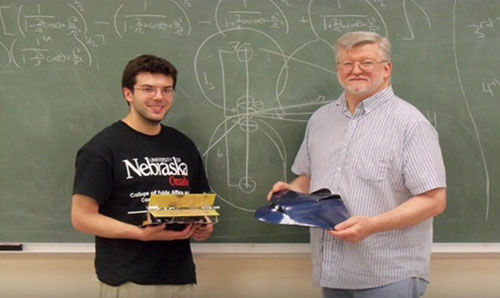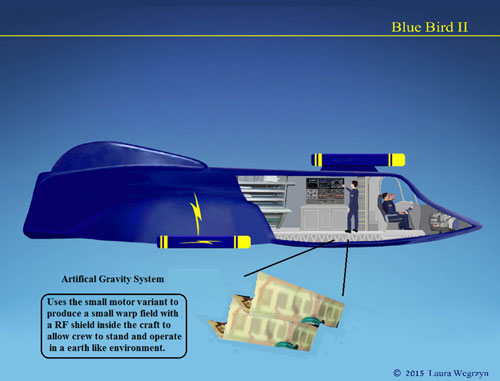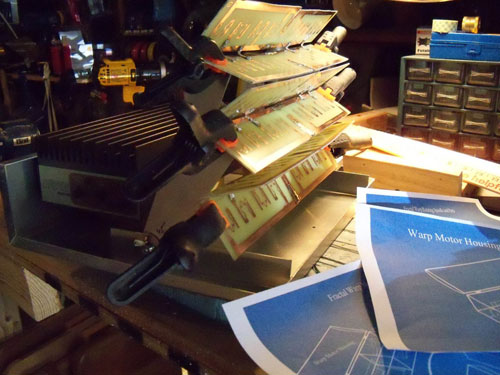THE real-life answer to Star Trek’s Scotty claims to have invented a warp drive.
The Scots-American engineer said his Celtic roots had helped inspire him to create a working model of the faster-than-light motor which powers Star Trek’s USS Enterprise.
David Pares – a retired air force meteorologist and physics professor – reckons he as defied the laws of physics and beaten NASA to invent the space age tech in his garage in Omaha, Nebraska.

Now he plans to scale up his warp drive to a model aircraft – before using it for interstellar travel across the universe.
Eventually he hopes to launch himself into space to the tune of the Celtic Woman’s version of Amazing Grace.
“Bagpipes can really inspire you,” he said, “also being half-Scottish, that’s probably why I always want more power for the ship.”

Professor Pares believes he has boldly gone where no man has gone before by successfully building a working model of a warp drive motor.
He follows in the footsteps of Scotty – the Linlithgow-born chief engineer of the Enterprise’s warp drive with the famous line: “I’m givin’ her all she’s got, Captain!”
The warp drive – originally a fictional device from the 1965 series of Star Trek – allows a vehicle to travel at speeds far greater than the speed of light by manipulating the “spacetime” around it.
The theory behind the warp drive motor was proven in 1994 – but scientists wrote it off as impossible owing to the amount of energy required.

But Pares believes he has proven them wrong from the garage of his Nebraska home – defying NASA who recently admitted that “for the near future, warp drive remains a dream.”
Since 2012 he has been working on the project – run on just 100 watts of electricity – and he now has results which could be scaled up to fit an unmanned model plane or even a space craft.
So far he and his team claim they have documented proof that they have “physically displaced” a 3.5 pound weight by bending spacetime.
He said: “We’ve been able to show all the numbers in our graphs that indicate that we’re producing an artificially induced pulling action.

“We’ve already shown that we can do this right now, but everybody’s waiting for Star Trek, don’t you know.
“And of course who the hell’s gonna listen to me? ‘He works out of a garage!’”
Pares has hit out at NASA’s refusal to review his work, saying: “”We’re held to a double standard.
“If NASA did what we did and had the measurements we have today, they’d be parading them around and getting the Nobel Prize in Physics.
“Us? We would have to build the Starship Enterprise.”
“The only difference between a garage and [NASA’s] lab is that I’ve got lower overhead,”
Now Pares is looking to scale up his experiments to create an unmanned aerial model containing the warp drive – proving his critics wrong in the skies over Nebraska.
He hopes to use the warp drive in a model plane he’s currently working on in his garage – called the Bluebird II.

